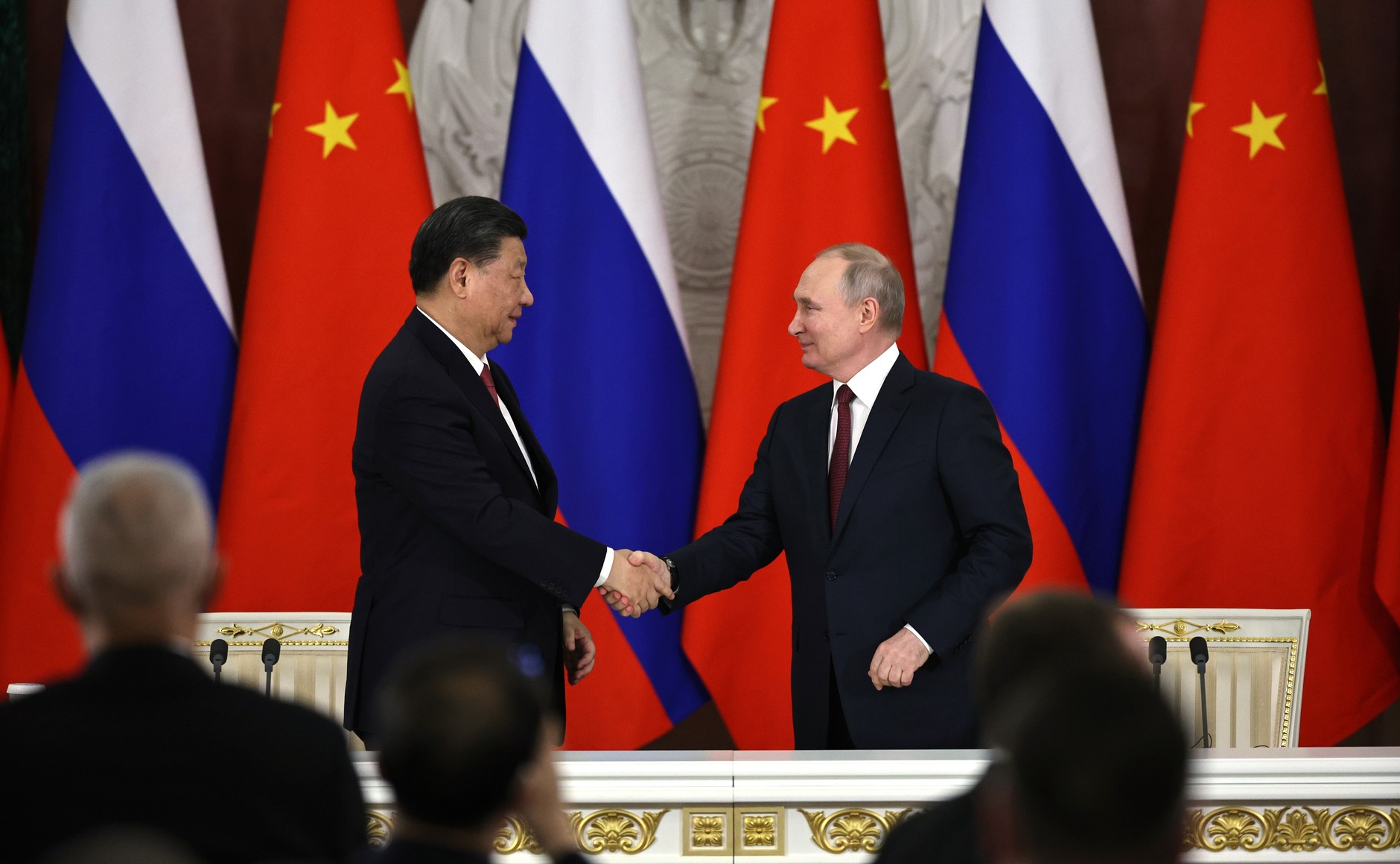Now Reading: What Happened to South American Integration? Crisis, Fragmentation, and Possible Paths
-
01
What Happened to South American Integration? Crisis, Fragmentation, and Possible Paths
What Happened to South American Integration? Crisis, Fragmentation, and Possible Paths

Since the mid-20th century, regional integration in South America has undergone various cycles, reflecting changes in the international system and political-economic shifts within the continent. The creation of regional blocs like Mercosur (1991) and the Andean Community of Nations (CAN, 1969) was driven by goals of economic strengthening, trade barrier reduction, and greater global insertion. However, progress has always been limited by political disputes, economic asymmetries, and ideological fluctuations among the region’s governments.
The 2000s marked a significant milestone for South American regionalism, fueled by the so-called Pink Tide, when several left-wing and center-left governments came to power, including Hugo Chávez in Venezuela (1998), Lula in Brazil (2002), Néstor Kirchner in Argentina (2003), and Evo Morales in Bolivia (2006). This landscape led to the creation of the Union of South American Nations (UNASUR) in 2008, an initiative focused not only on economic cooperation but also on political and defense coordination.
Simultaneously, other initiatives emerged, such as the Bolivarian Alliance for the Peoples of Our America (ALBA, 2004), promoted by Venezuela and Cuba, and the Pacific Alliance (2012), composed of Chile, Peru, Colombia, and Mexico, which followed a more liberal and externally market-oriented approach.
However, starting in 2014, the global economic crisis, the decline in commodity prices, and the weakening of progressive governments in the region undermined the structures built in the previous decade. Mercosur, already struggling to deepen its customs union, saw its trade negotiations stagnate. UNASUR began losing momentum with the withdrawal of countries like Brazil and Colombia in 2018, and its dissolution became inevitable.
The fragmentation of South American integration reflects the lack of political and economic consensus in the region. Dependence on primary exports and competition among countries for international markets have made the blocs vulnerable to global crises. Additionally, the lack of investment in regional infrastructure and logistics has prevented the consolidation of truly integrated production chains.
The Crisis of South American Integration
The crisis of South American regionalism is marked by structural and situational challenges that have hindered the continuity of integration projects. These challenges can be grouped into three main axes: (1) economic imbalances and external dependence, (2) political and ideological fragmentation, and (3) lack of infrastructure and institutional coordination.
Economic Imbalances and External Dependence
Since the 2000s, South America has maintained a growth model based on commodity exports, driven by Chinese demand and the commodities supercycle. However, this model began to crumble with the slowdown of the Chinese economy starting in 2013, directly affecting countries like Brazil, Argentina, Venezuela, and Ecuador, which are highly dependent on agricultural, oil, and mineral exports.
The 2008-2009 economic crisis had differentiated impacts on the region. Brazil and Argentina, the main engines of Mercosur, suffered from declining industrial activity and domestic consumption. Between 2014 and 2016, Brazil’s GDP fell by 7%, while Argentina faced recurring recessions. Paraguay and Bolivia, less dependent on industry and with strong agricultural growth, maintained annual growth rates above 4%.
Another critical factor is dependence on the United States and China. The trade war between the two powers indirectly affected South America, creating instability in commodity prices and complicating autonomous trade negotiations. Brazil, for example, saw its trade balance with China strengthen, while the U.S. imposed protectionist measures on Brazilian steel and aluminum.
Mercosur, in turn, has struggled to secure international agreements, with negotiations with the European Union, initiated in 1999, still facing political and environmental hurdles. Meanwhile, countries like Chile, Peru, and Colombia turned to the Pacific Alliance, a bloc focused on greater trade openness and ties with Asia.

Political and Ideological Fragmentation
South American integration has always been marked by political and ideological disputes. The regionalism of the 2000s was led by progressive governments prioritizing regional autonomy and supranational institutions. However, starting in 2015, a significant political shift occurred. The rise of leaders aligned with economic liberalism and U.S. foreign policy, such as Mauricio Macri in Argentina (2015-2019) and Jair Bolsonaro in Brazil (2019-2022), led to the erosion of projects like UNASUR and Mercosur. These governments focused on trade flexibility and reducing the role of regional institutions, contributing to a setback in integration.
The case of UNASUR is emblematic. Created in 2008 as a mechanism for political dialogue and regional coordination, its crisis began in 2018 when Colombia, Brazil, Argentina, Chile, Paraguay, and Peru decided to withdraw, claiming the organization had become a politicized and ineffective space. As an alternative, in 2019, conservative countries created PROSUL, a platform with less institutionalization and a focus on economic cooperation and security, but lacking strong governance, resulting in limited effectiveness.
Moreover, the political crisis in Venezuela deepened regional divisions. In 2017, Mercosur expelled the country, citing violations of the bloc’s democratic clause. While Argentina, Brazil, and Colombia recognized Juan Guaidó as interim president, Mexico and Bolivia maintained support for Nicolás Maduro, highlighting the lack of regional consensus. The crisis intensified in 2024 with Venezuela’s new election, marred by allegations of fraud and political repression. The Lula government attempted to act as a mediator but faced difficulties in building a dialogue acceptable to both Caracas and other regional countries. The Venezuelan impasse reinforces South America’s fragmentation and prevents the region from advancing a unified stance in the international community.
Boas vindas ao presidente da Argentina, Javier Milei, na Cúpula do G20 no Brasil. 🇧🇷 🇦🇷 pic.twitter.com/s3HBEIvVM5
— Lula (@LulaOficial) November 18, 2024
The election of Javier Milei in Argentina (2023) further deepened the continent’s political divide. Milei, an ultraliberal, adopted a foreign policy openly antagonistic to Mercosur, calling the bloc a “burden” on Argentina’s economy. He has also prioritized bilateral relations with the U.S. and Israel, expressing interest in a direct trade agreement with the U.S., undermining Mercosur’s integrated structure. During his first months in office, tensions between Argentina and Brazil escalated, with exchanges of accusations between Milei and Lula, harming regional coordination.
Another factor hindering Brazil’s regional leadership is the lack of consensus among South American countries on environmental and sustainable development issues. The Amazon Summit in 2023 highlighted these divisions. Lula sought to promote a regional agreement for Amazon protection, but faced resistance from governments like Colombia, which advocated stricter restrictions on oil exploration, and Venezuela, which rejected external interference in its environmental policies. Additionally, Ecuador and Peru showed little commitment to ambitious environmental goals, making a comprehensive agreement difficult. The summit’s final document lacked clear targets and concrete commitments, dashing hopes that Brazil could lead a new environmental agenda for South America.
Beyond political disputes, there is an economic misalignment between regional blocs. While the Pacific Alliance (Chile, Peru, Colombia, and Mexico) maintains a stance more open to free trade and agreements with the U.S. and Asia, Mercosur still faces bureaucratic hurdles and difficulties in advancing new trade deals. In 2021, Uruguay challenged Mercosur’s rules by negotiating a free trade agreement with China without the bloc’s approval, sparking tensions with Brazil and Argentina.
The absence of a shared vision for South American integration has stalled joint projects and left the region vulnerable to external pressures. The continent remains fragmented, without a clear strategy to strengthen its geopolitical and economic position globally.
Infrastructure and Lack of Regional Coordination
The lack of physical and logistical connectivity is a major obstacle to South American integration. Unlike the European Union, which heavily invested in integrated infrastructure, South America still lacks highways, railways, and energy networks to facilitate intraregional trade and reduce logistical costs. This structural deficiency discourages trade among continental countries and keeps them dependent on external markets.
The Initiative for the Integration of Regional Infrastructure in South America (IIRSA), launched in 2000, was one of the most ambitious efforts to modernize regional connectivity. The project aimed to create logistical development corridors to boost commercial integration but suffered from lack of funding, political discontinuity, and government disagreements. Between 2000 and 2015, only 40% of planned projects were implemented, with many abandoned after government changes.
The fragility of regional infrastructure was further exacerbated by the dismantling of UNASUR, which led to the deactivation of strategic bodies like the Council for Infrastructure and Planning (COSIPLAN), responsible for coordinating transport projects, and the South American Institute of Governance in Health (ISAGS), which promoted health cooperation. As a result, South America lost key mechanisms for logistical and health coordination, complicating joint responses to structural challenges.

China’s Growing Influence and Bioceanic Corridors
While South American countries struggle to coordinate infrastructure projects, China has expanded its presence in the region through strategic investments. The Asian nation became the largest trade partner for several South American economies, including Brazil, Chile, and Peru, and has funded essential logistical projects to facilitate commodity exports to Asia.
One of the most significant examples is the creation of bioceanic corridors, connecting the Atlantic and Pacific Oceans to reduce reliance on North American ports and the Panama Canal. Key projects include:
- Santos-Antofagasta Bioceanic Corridor – A road and rail axis linking the port of Santos, Brazil, to the port of Antofagasta, Chile, crossing Paraguay and Argentina. The project aims to reduce export times for Brazilian goods to Asia and strengthen South American agribusiness logistics.
- Santos-Chancay-Lima Corridor – China heavily invested in building the Port of Chancay, Peru, which will become a key logistical hub for South American exports to Asian markets. This corridor will enable Brazilian and Argentine products to reach Asia via the Pacific, shortening distances and reducing transport costs.
- China-Funded Transcontinental Railroads – Projects like the Central Bioceanic Railway, linking Brazil, Bolivia, and Peru, demonstrate China’s growing role in South American infrastructure. These investments aim to strengthen China’s commercial presence and create logistical routes favoring South-South trade.
The expansion of Chinese infrastructure investments brings opportunities and challenges for South America. On one hand, China-funded projects can address historical infrastructure gaps, promoting greater connectivity and commercial integration. However, excessive reliance on Chinese capital may compromise regional autonomy, as Beijing tends to impose conditions favoring its companies and geopolitical interests.
Lack of Regional Coordination and Impacts on Cooperation
Beyond physical infrastructure challenges, lack of political and institutional coordination has hindered joint responses to crises. The COVID-19 pandemic exposed this fragility: while the European Union coordinated joint vaccine purchases and medical assistance, South American countries acted in isolation, competing for supplies and resources. The attempt to create a Mercosur Vaccine Fund was late and had limited impact, highlighting the absence of an effective regional mechanism to address health and humanitarian challenges.
Another example is energy integration, an area where South America could greatly benefit. The continent has vast hydropower, solar, and wind energy reserves, along with being a top lithium producer, essential for electric batteries. Yet, the lack of an integrated energy transition project means countries negotiate individually with major powers like China and the EU, without a coordinated strategy.
The Impact of the International Landscape
The crisis of South American integration does not occur in a vacuum. External factors have played a crucial role in fragmentation and the difficulty of building a solid regional bloc. The rise of China, the new Donald Trump administration in the U.S., and the Mercosur-EU agreement represent challenges and opportunities for the region but also expose the lack of an integrated strategy to strengthen South America’s geopolitical and economic position globally.
The Mercosur-EU Agreement: Integration or Trap?
After over 20 years of negotiations, Mercosur and the European Union finally signed a free trade agreement in December 2024, potentially creating one of the world’s largest trade zones. The pact covers 718 million people and a combined GDP of $22 trillion. Brazil, as Mercosur’s largest economy, anticipates trade balance gains and industrial modernization from access to the European market. However, a deeper analysis reveals the agreement may widen structural inequalities, disproportionately benefiting Brazilian agribusiness at the expense of national industry.
With the elimination of tariffs on 91% of EU products and 93% of Mercosur goods, South American industries will face stiff competition, as European products come from economies with stimulus policies, low interest rates, and high technological competitiveness.
One of the most vulnerable sectors is manufacturing, already grappling with accelerated deindustrialization. Projections by the Institute for Applied Economic Research (IPEA) suggest the agreement could reduce industrial participation in Brazil’s GDP and cause losses in vehicles, metallurgy, electronics, pharmaceuticals, and machinery. Brazilian agribusiness benefits, expanding beef, sugar, and ethanol exports. However, this growth follows a commoditization model, intensifying pressure on sensitive biomes rather than incentivizing sector modernization, value-added production, or sustainable development.
Additionally, the agreement limits Brazil’s autonomy in public procurement policies, allowing foreign firms to compete for government contracts. This may reduce the state’s ability to foster strategic sectors and compromise industrialization and technological innovation projects.
Given this scenario, who benefits from this unequal exchange? For agribusiness and mining sectors, the deal offers significant gains, but for industry and technological development, it could be a historic setback. If South America aims to strengthen integration and build a sustainable economic model, it must rethink trade agreements that deepen dependencies rather than bolster regional productive autonomy.
The New Trump Administration and Relations with South America
Donald Trump’s return to the U.S. presidency in 2025 brought an aggressive agenda for Latin America, with immediate impacts on trade, geopolitics, and migration. Unlike his first term (2017-2021), Trump now has greater control of Congress, enabling him to impose protectionist, unilateral, and interventionist policies with fewer obstacles.
Steel and Aluminum Tariffs
One of Trump’s first moves was imposing 25% tariffs on steel and aluminum, directly affecting Brazil, Mexico, Canada, and South Korea. This decision eliminated exemptions and preferential quotas, harming a key sector for Brazil’s economy, as the U.S. is the largest market for Brazilian steel, receiving 4.1 million tons in 2024. The impact was immediate: Brazilian steel companies faced abrupt demand drops and increased trade uncertainty.
Beyond steel, Trump threatened additional tariffs on cars, pharmaceuticals, and computer chips, measures that could affect Brazilian and South American exports. His protectionist rhetoric aims to pressure U.S. firms to reduce imports and boost domestic production, but in practice, these policies have sparked retaliation from trade partners like the EU and China, further destabilizing the global economy.
The Migration Crisis and Mass Deportations
Trump also intensified anti-immigration policies, promoting mass deportations and expanding Immigration and Customs Enforcement (ICE) operations. The U.S. government began weekly flights deporting Brazilians, with the latest bringing 111 Brazilians back to the country.
Unlike the Biden administration, which focused on border control, Trump expanded ICE operations across the entire U.S., including arrests in churches, hospitals, and schools, creating a climate of fear among undocumented immigrants. Additionally, the administration removed protections that previously spared non-criminal deportees, making any undocumented immigrant a potential target.
These measures strain U.S.-Brazil relations, especially after reports of shackling and degrading treatment of deportees. Brazil’s Foreign Ministry demanded explanations from the U.S. government but has yet to receive a formal response.
Pressure on Panama and Canal Control
Another flashpoint of Trump’s new administration is his threat to retake control of the Panama Canal. In recent statements, Trump claimed the U.S. would “take the canal back or something very powerful will happen.” His justification cites China’s growing influence over Panamanian port infrastructure, which, according to Washington, violates the canal’s neutrality treaty.
The Panamanian government, led by José Raúl Mulino, rejected Trump’s threats, reaffirming that the Panama Canal remains under Panamanian sovereignty. However, the country conceded to some pressure, announcing it would not renew its memorandum of understanding with China’s Belt and Road Initiative, distancing Beijing from strategic investments in the region.
Trump also dispatched Secretary of State Marco Rubio to negotiate greater U.S. infrastructure investments in Panama, suggesting Washington could replace Beijing as the country’s main partner. This move underscores the escalating U.S.-China rivalry in Latin America, with regional countries pressured to pick sides in the global geopolitical contest.
Fragmented Governance and the Weakening of the South
While other regional blocs, like the European Union and ASEAN, consolidate as relevant geopolitical actors, South America remains fragmented, without a unified voice on the global stage. Regionalism, which could be a tool to amplify the region’s influence, faces deep political and institutional challenges, weakening South America’s collective bargaining power.
The Collapse of UNASUR and the Lack of Alternatives
The crisis of UNASUR, effectively dissolved in 2018, exposed the fragility of political integration projects in the region. Created in 2008 to promote political dialogue and regional coordination, the organization was dismantled due to ideological divisions and government disengagement. The attempt to replace it with PROSUL, a less institutionalized bloc focused on economic cooperation and security, failed to fill the void left by UNASUR.
Moreover, the region remains split between two distinct models: while Mercosur, led by Brazil and Argentina, faces internal challenges, the Pacific Alliance (Chile, Peru, Colombia, and Mexico) deepened integration with the U.S. and Asia, distancing itself from the rest of South America. This strategic misalignment prevents a cohesive regional foreign policy, leaving South American countries more vulnerable to external powers like China and the U.S.
Lula and the Challenges of Regional Leadership
Since returning to the presidency in 2023, Luiz Inácio Lula da Silva has sought to restore Brazil’s regional leadership but has struggled to exert effective influence. The Brazilian government found itself isolated on strategic issues, and attempts to foster regional cohesion have faced resistance from allies and adversaries alike.
A clear example occurred at the G20 Summit in November 2024, where Argentine President Javier Milei opposed key points of the final declaration, including environmental and economic proposals backed by Brazil. Milei’s stance nearly derailed Lula’s diplomatic efforts, exposing South America’s lack of alignment.
Additionally, the 2023 Amazon Summit revealed Brazil’s difficulty in uniting Amazonian countries around concrete conservation commitments. While Lula pushed for a regional agreement, Colombia and Venezuela clashed over oil exploration restrictions, and Ecuador and Peru adopted cautious positions, undermining consensus.
Venezuela’s Electoral Crisis and Brazil’s Ambiguous Stance
Another source of instability is Venezuela’s political crisis. The July 28, 2024, elections, which reelected Nicolás Maduro, were marred by fraud allegations and repression of opponents. The crisis deepened when the Organization of American States (OAS) rejected a joint resolution calling for electoral transparency, demanding independent verification.
Brazil, however, abstained from the vote, avoiding direct opposition to Maduro. The decision drew criticism domestically and internationally, highlighting the Lula government’s cautious and ambiguous stance on Venezuela.
This indecision undermines Brazil’s credibility as a regional mediator and fuels distrust among South American nations. Furthermore, divisions within Mercosur over how to handle Venezuela reinforce the lack of political unity in South America.
Paths Forward for a New Regional Integration Agenda
The crisis of South American integration is not irreversible, but overcoming it requires a long-term, realistic plan adapted to future challenges. South America possesses strategic resources, a young population, and a significant market, yet institutional, political, and economic obstacles hinder its consolidation as a relevant global bloc.
If the region aims to reclaim its prominence and reduce vulnerability to great powers, it must learn from past mistakes and define a modern, pragmatic, and sustainable integration strategy. This demands focusing on four key pillars for a new South American regionalism.
1. Regional Reindustrialization and Reducing Commodity Dependence
South America remains trapped in a commodity-export model, failing to add value to its production. This approach benefits agribusiness and mining but worsens deindustrialization, fosters technological dependence, and stifles resilient, complex economies.
To reverse this, a regional reindustrialization strategy should prioritize:
- Regional production chains – Develop strategic sectors like technology, renewables, biotech, and pharmaceuticals, reducing reliance on China, the EU, and the U.S.
- A South American Development Bank – Inspired by the BRICS Bank, this institution could fund infrastructure, innovation, and reindustrialization, supporting tech hubs and high-value industries.
- Smart modernization policies – Unlike the tariff elimination in the Mercosur-EU deal, South America needs strategies to protect industries until they achieve global competitiveness.
If South America continues exporting soy and minerals while importing manufactured goods, its integration will remain fragile and subordinate to great powers. Regional industrialization must become the backbone of a new development model.
2. Institutional Strengthening and Regional Integration 2.0
South America’s political and institutional fragmentation blocks meaningful integration progress. The collapse of UNASUR and the ineffectiveness of PROSUL show that without strong institutions, regional cooperation becomes ad hoc, unstable, and structurally weak.
To address this, the region must:
- Establish a new mechanism, a UNASUR 2.0, with real intergovernmental tools, avoiding ideological partisanship or diplomatic symbolism. This institution should focus on institutional, industrial, and economic development, ensuring effectiveness and continuity.
- Create a South American Economic Council, uniting finance ministers and central bank presidents to define shared growth and investment policies.
- Strengthen Mercosur, expanding its scope beyond trade to infrastructure, research, and technological innovation.
The EU and ASEAN demonstrate how strong regional institutions ensure prosperity and autonomy. Without robust economic governance, South America will remain vulnerable to geopolitical rivalries and lose global relevance.
3. Energy Integration and Sustainability
South America boasts some of the world’s largest renewable energy reserves, including hydropower, solar, wind, and lithium. Yet, the lack of a coordinated strategy to harness these resources creates vulnerability and external dependence.
To change this, the region must:
- Build a South American Energy Grid – Interlink power systems to ensure energy security and competitive tariffs.
- Invest in green hydrogen and energy transition – Position South America as a leader in sustainable energy, reducing fossil fuel reliance.
- Regulate foreign energy investments – Avoid externally imposed environmental rules (adopting feasible regional standards) and ensure the energy transition serves South American interests.
If South America fails to coordinate its energy agenda, it will keep exporting raw lithium and crude oil to wealthy nations without adding value to its economy.
4. Infrastructure and Connectivity
The lack of infrastructure remains a major barrier to integration. Without efficient highways, railways, ports, and digital networks, intraregional trade stagnates.
Solutions include:
- Reviving IIRSA projects – Secure funding for bioceanic highways, railways, and logistical corridors.
- Expanding digital infrastructure – Launch a South American Connectivity Plan, boosting fiber-optic networks and digital sovereignty.
- Facilitating regional trade – Eliminate bureaucratic and customs barriers.
Without a strategic infrastructure plan, South America will stay geographically fragmented, lacking global influence and development prospects.
Conclusion: What Lies Ahead for South America?
The crisis of South American integration is not inevitable but stems from political, economic, and institutional choices made over decades. While other regions built strong, effective blocs, South America remains disjointed, vulnerable, and increasingly dependent on external interests.
The international landscape offers no leniency to regions without planning or strategic unity. China’s rise in Latin America, U.S. and EU protectionism, and the crisis of traditional multilateralism demand a clear, coordinated South American response. Yet, the absence of a shared vision and internal political instability hinder sustainable regionalism.
The future of integration hinges on decisions made in the coming decades. The paths outlined here present both promising opportunities and alarming risks. Choosing between a proactive, autonomous model and a fragmented, dependent regionalism will determine South America’s role in the 21st century.
Possible Scenarios
- Optimistic but Difficult – South America revives integration with vigor, adopting a pragmatic, ideology-resistant model. New institutions emerge, and past mistakes are corrected. This scenario requires strong political commitment and regional diplomacy, which seems unlikely but remains possible.
- Moderate but Viable – Brazil adopts a pragmatic, moderate role, focusing not on unilateral leadership but gradually strengthening ties with neighbors. Instead of empty integration rhetoric, the country prioritizes trade policies, infrastructure, and reindustrialization, laying the groundwork for a regionalism rooted in economic strength. This path demands planning and coordination but is the most feasible short- to medium-term option.
- Negative but Likely – Brazil abandons regional leadership, focusing on relations with the U.S., China, and Europe, while maintaining reactive, piecemeal agreements with neighbors. This model does not end regionalism but renders it limited, fragmented, and ineffective, deepening South America’s dependence on external actors.
- Problematic but Gaining Traction – South America stays disunited, unable to counter geopolitical and economic pressures. Foreign powers expand their influence, while regional countries remain divided, without a shared future. The result would be the world’s most disintegrated region, serving only as a commodity exporter to great powers.
The Choice of South American Leaders
South America stands at a crossroads. It can advance toward mature, economically and institutionally robust integration or remain a fragmented space, incapable of shaping its global destiny.
The core question is not just whether regional countries want stronger integration but whether they are willing to overcome past mistakes and build a model prioritizing autonomous, sustainable development. This would require:
- A coordinated strategy, avoiding destructive ideological clashes and policy discontinuities.
- Concrete investments in infrastructure, reindustrialization, and energy, creating a foundation for sustainable regionalism.
- An engaged Brazil, not as a hegemon but as a pragmatic articulator, leading by example rather than rhetoric.
- A long-term vision, treating integration as an essential tool for South American strength, not a short-term government project.
The pressing question is: Will South American leaders dare to build sustainable integration, or will they remain hostage to short-termism and internal divisions?
The answer will define South America’s role this century. The region can become a strong, competitive bloc or remain a fragmented, powerless territory at the mercy of great powers. The future of integration is at stake, and today’s decisions will determine South America’s relevance for decades to come.
Stay Informed With the Latest & Most Important News
-
 01Pepe Mujica: The Rich Legacy of the Peasant Who Knew How to Make Concessions to the Market Without Losing Ideological Direction
01Pepe Mujica: The Rich Legacy of the Peasant Who Knew How to Make Concessions to the Market Without Losing Ideological Direction -
 02New modelling reveals full impact of Trump’s ‘Liberation Day’ tariffs – with the US hit hardest
02New modelling reveals full impact of Trump’s ‘Liberation Day’ tariffs – with the US hit hardest -
 03Democracy in the Face of Ecological Collapse
03Democracy in the Face of Ecological Collapse -
 04What’s so special about Ukraine’s minerals? A geologist explains
04What’s so special about Ukraine’s minerals? A geologist explains -
 05New Pope Possesses Attributes That Could Expand Vatican’s Diplomatic Influence in Global Geopolitics
05New Pope Possesses Attributes That Could Expand Vatican’s Diplomatic Influence in Global Geopolitics -
 0650 years later, Vietnam’s environment still bears the scars of war – and signals a dark future for Gaza and Ukraine
0650 years later, Vietnam’s environment still bears the scars of war – and signals a dark future for Gaza and Ukraine -
 07China’s new underwater tool cuts deep, exposing vulnerability of vital network of subsea cables.
07China’s new underwater tool cuts deep, exposing vulnerability of vital network of subsea cables.











